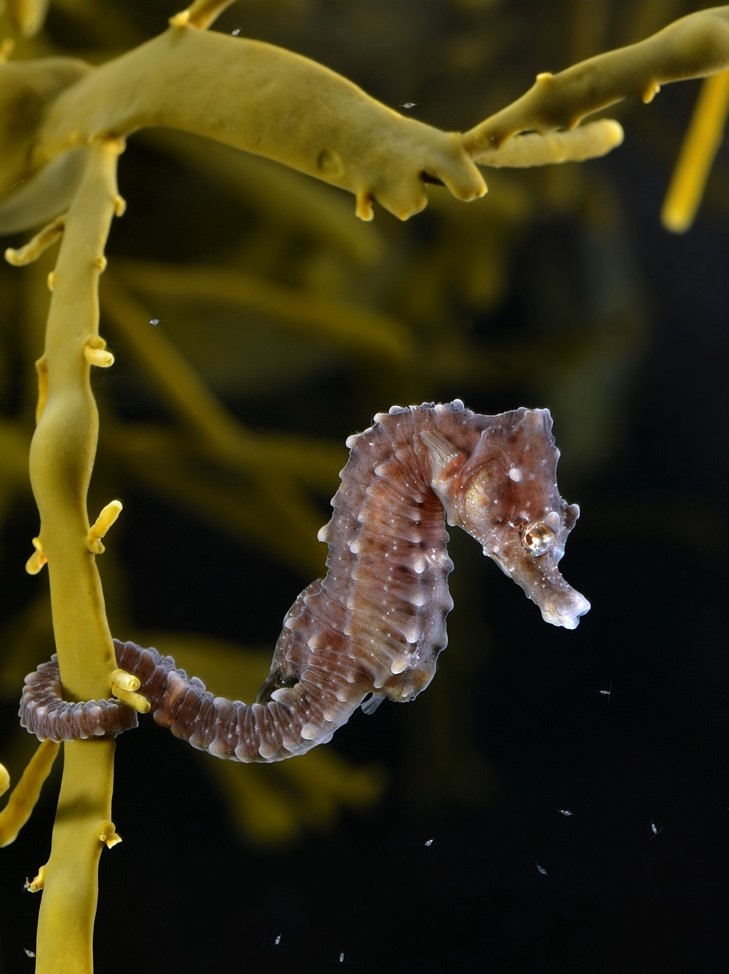Description

Disclaimer: Copyright infringement not intended.
Context
- The population of White's Seahorses in Sydney Harbour has significantly declined over the years, with a nearly 50% reduction between 2008 and 2015.
- This decline is attributed to the loss of suitable habitats for seahorses.
Details
The Sydney Seahorse Project
- The Sydney Seahorse Project is a collaborative initiative between the Sydney Institute of Marine Science, the University of Technology Sydney, and the New South Wales (NSW) Department of Primary Industries.
- Its primary goal is the conservation of the endangered White's Seahorses, which are native to the waters surrounding Australia's east coast.
Endangered White's Seahorses
- White's Seahorses (Hippocampus whitei) are a unique and iconic species found in the waters of Australia's east coast.
- They have been classified as endangered on the IUCN Red List since 2017 due to habitat loss and other threats.
Purpose of Seahorse Hotels
- The seahorse hotels are artificial structures designed to provide suitable habitats for White's Seahorses.
- Made from biodegradable metal, these hotels mimic discarded crab traps, which are common homes for seahorses in the wild.
Aiding Repopulation Efforts
- The installation of the seahorse hotels aims to restock the wild population of White's Seahorses in Sydney Harbour.
- By providing safe and conducive habitats, the project seeks to help these endangered seahorses persist into the future.
Environmental Benefits
- The hotels are installed at least a month before the release of seahorses to allow the accumulation of algae, sponges, and other marine fouling, making them more natural and attractive habitats.
- Over time, the biodegradable metal breaks down and disappears, leaving behind a semi-natural reef that benefits not only the seahorses but the broader ecosystem of the harbour.
Positive Results
- Earlier releases of seahorses using similar structures have shown promising results.
- A year after the 2020 release in Chowder Bay, 20% of the released population remained on the hotels, and 10% were pregnant in the wild, indicating successful adaptation and potential for population growth.
.jpg)
Sea Horses: Fascinating Creatures of the Ocean
- Sea horses are fascinating marine creatures known for their unique appearance and behavior.
- They belong to the genus Hippocampus and are part of the Syngnathidae family, which also includes pipefish and seadragons.
- Sea horses are found in various marine habitats worldwide, from shallow coastal waters to deep ocean environments.
Unique Physical Characteristics
- Sea horses have a distinctive appearance, with a horse-like head, a long snout, and a neck that allows them to move their heads independently of their bodies.
- They have a prehensile tail, which they use to hold onto objects like seagrass or corals.
- Instead of scales, their bodies are covered with bony plates, providing them with a hard exoskeleton.
Camouflaging Abilities
- One of the most remarkable features of sea horses is their ability to change color and blend in with their surroundings, providing effective camouflage from predators and prey alike.
- They can also adjust the texture of their skin to match the texture of the surrounding environment.
Reproduction and Parental Care
- Sea horses are among the few species in the animal kingdom where the males become pregnant.
- During courtship, the male and female perform a series of elaborate dances, often involving synchronized swimming.
- The female deposits her eggs into the male's brood pouch, where he fertilizes them and carries them until they hatch.
- After hatching, the male gives birth to live young sea horses, releasing them into the water
Feeding Habits
- Sea horses are carnivorous and primarily feed on small crustaceans, plankton, and tiny fish.
- They have a unique method of feeding called "pivot feeding," where they use their long snouts to suck up prey, similar to a vacuum cleaner.
Threats and Conservation
- Sea horses face various threats due to habitat destruction, pollution, and overfishing.
- They are often captured for the curio trade and traditional medicine in some cultures, leading to a significant decline in their populations.
- Several species of sea horses are listed as vulnerable or endangered on the IUCN Red List, highlighting the need for conservation efforts to protect these captivating creatures.

Conclusion
Sea horses are enchanting marine animals with their extraordinary features and behavior. As delicate creatures facing numerous threats, it is essential to raise awareness about their conservation and take proactive measures to preserve their habitats and ensure their survival in the world's oceans.
|
PRACTICE QUESTION
Q. Which of the following statements about seahorses is correct?
1.Seahorses are commonly found in the waters surrounding Australia's east coast.
2.They are known for their rapid and large-scale spread, causing disruption to aquatic ecosystems.
3.Seahorses are often considered a flagship species for conservation due to their high economic value in the ornamental plant trade.
a. Only statements 1 and 2 are correct.
b. Only statements 2 and 3 are correct.
c. Only statements 1 and 3 are correct.
d. All of the above statements are correct.
Answer: c
|
https://www.thehindu.com/sci-tech/energy-and-environment/australias-seahorse-hotels-aim-to-save-endangered-species/article67105077.ece












